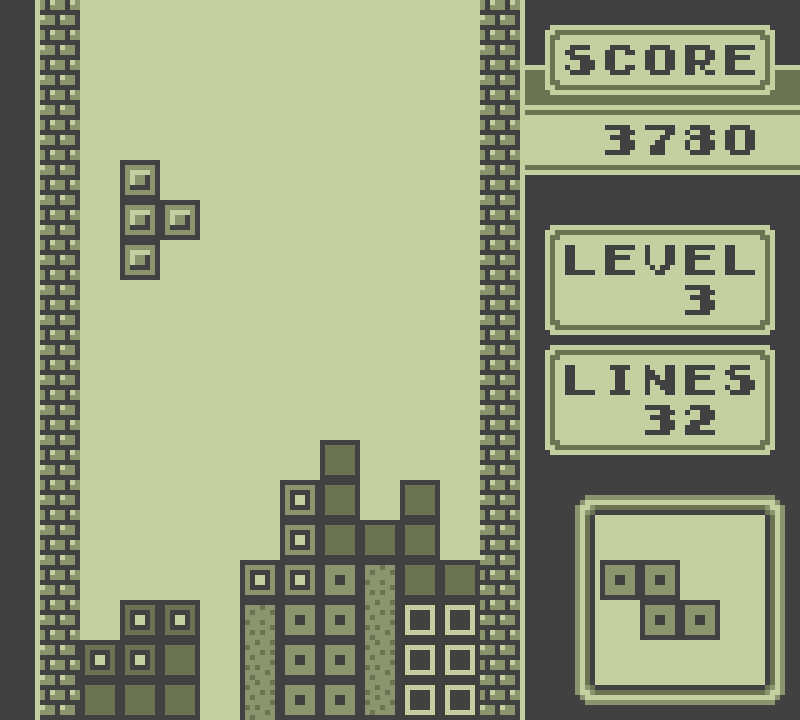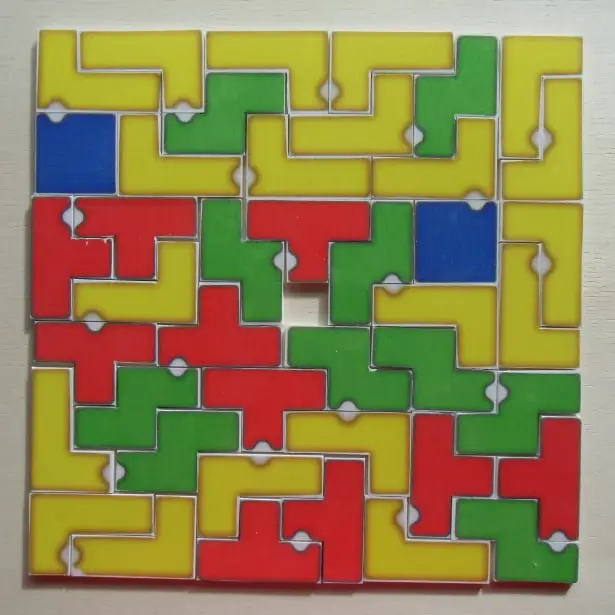
Even though Super Mario Bros are the king of all video games, there was a close second that sold almost as well but was even more addicting
Tetris came out in 1984 and is a tile-matching video game. It was designed by a Russian game designer and involved combining four different four-piece blocks and would end up being available for pretty much every video game system ever made. It was a massive hit, the best-selling video game of all time, and massively addicting
Do you remember when Tetris came out? I remember the hype behind it so well over the years that it was released. It was so simple but so addicting. I actually got to the point that I would see Tetris blocks everywhere I went and my mind started thinking of trying to connect patterns.
I remember sitting in math class and having Tetris just automatically playing in my head until I made notice of it. And I wasn’t the only one, Tetris was a massive hit and wound up being the best-selling video game of all time BY FAR. As of now, it’s sold an amazing 170 million copies beating Minecraft and Grand Theft Auto, respectively.
So let’s look back on this monumental video game and what made it dominate the video game world.
How Tetris Came Out Of The Cold War
So the Cold War is still raging in the USSR and an engineer named Alexey Pajitnov was working at the Soviet Academy of Sciences in Moscow. Pajitnov loved a game called “Tetrominos” which involved putting a bunch of geometric shapes in a rectangle without leaving any spaces. Tetronimos has been around since the early 1900s and popular with mathematicians.
He wondered if this is something that would transfer over into a computer game and sought out one of his colleagues. With help from Dmitry Pavlovsky, they came up with a rudimentary computer game using super basic graphics that used no sound. It was developed and played on an Electronika 60 and due to the limited computing power they had to use text characters so each shape was made up of text letters.
The problem was even if you were combing lines together and making everything fit the screen was filling up too quickly. This is when they came up with the feature that would enable the great game play of Tetris; the completed lines would be deleted.
The Early Game Play

So they’ve taken the concept of Tetronimos and added the function of gravity which would introduce the shapes from the top of the screen and allow them to fall to the bottom (like I have to tell you this, in case you’ve never played Tetris). They decided to go with just four shapes each made up of four blocks and this would also differ it from Tetronimos.
As the levels passed the shapes would fall at increasingly faster speeds making the challenge grow as the game did which was different from a game such as PAC MAN which always had the same speed and intensity no matter what level you were on.
So you had to make lines and clear them and it seemed very simple. But also very addicting. Now, what would they call it?
Alexy actually took the name Tetronimos which seems obvious but combined it with his favorite sport tennis to combine into Tetris. You can’t make this stuff up.
Starting To Produce Tetris
Tetris would be ported over to the IBM PC and they were able to start sharing it around on gigantic floppy disks (if you’re under 30 and don’t know what a floppy disk is ask your parents) This new game was now shared all around the computer center and they ate it up big time. It seemed too simple to be engaging, but they found themselves unable to stop (In Soviet Russa, Tetris plays YOU)
It was getting so bad that they were starting to neglect their work as they were too caught up in Tetris. You can practically hear the cash register sounds happening. In the summer of 1985, a color version of Tetris was created and this spread like wildfire throughout Moscow.
Somehow, Tetris made its way to Budapest, Hungary where a British software company came across it. I suspect it was in some street market like all great artifacts are accidentally discovered. So here’s some Russian red tape at the time. SInce Pajitnov was working for the Soviet government, his intellectual property was owned by the state.
Does this mean the government-owned Nikolai Volkoff’s bear hug finisher was owned by them too?
The crazy thing is none of them had thought that this could be a product that could actually be sold because it seemed too simple. They thought it was just something to pass around amongst friends and had no idea it had spread so far. Due to the Soviet Government owning the intellectual property it would end up screwing Pajitnov out of money for years.
The Battle Over Tetris
So Tetris became at the center of a rights war between the Soviet government’s foreign trade organization and a bunch of Western companies. During all these battles the U.S said “nyet” and released a very unofficial version of Tetris. Actually, it would be “questionable official” at best but whatever, they got it out there. They put it out in 1986 and Tetris would be the first Soviet game to ever be introduced to American audiences.
The intrigue and controversy behind Tetris did not hurt either, and this is still at a time when anything to do with Russia was still making people nervous. They were able to market the game as being a secret Russian invention that had been kept “behind the Iron Curtain”.
The other big thing is no one had really seen a game like it before. It had only been a few years since the video game resurgence after the great video game crash of 1983. Most games were still cartoony or “shooter” style and Tetris was something completely different.
Video games tend to be chaotic and thoughtless but Tetris required order, patience, and thinking. All the things that I lacked in the 80s… But like everyone else who ever played Tetris it became immediately addictive and a huge hit. I think a big part of it is there is a very fast learning curve. You can pretty much understand the game play within a few seconds. It doesn’t take much trial and error to understand the game play and you can immediately be good at it which is a huge selling point for any successful game.
But no one actually still had rights to the game.
Winning The Tetris Battle
Companies were going back and forth with the Soviets for years trying to secure the rights. This included Atari who you think would have pulled it off, but it went to their old friends Nintendo. They secured the rights for Tetris in 1989.
The NES was now a big and established hit and they would bundle Tetris in with various box sets. They also would use it in a new gaming console which would be responsible for launching Tetris into the stratosphere.
The Game Boy.
There was some hesitation around the Game Boy – which seems funny looking back – but it was thought that including Tetris with it would help the Game Boy appeal to a wider audience. The Game Boy version of Tetris would go back to its roots using grey scaled graphics and Russian influenced music which would end up becoming pretty iconic.
This version of Tetris would be the closest to Pajitnov’s original vision for the game. And he still wasn’t getting paid. It wouldn’t be until 1996 that he would start receiving money for the game he created.
The Tetris Effect
Remember at the start of this where I mentioned about thinking I was seeing Tetris everywhere I went? This was a very real effect that hit a lot of people. It would take scientific study to identify this “Tetris Effect” which was caused by prolonged play. This would cause us to see the real world like it was a game of Tetris. You would start seeing everyday objects in means of how they would fit together and it was actually classified as a form hallucination.
Yikes.
It did have one positive effect in that it was seen as effective for people who were dealing with PTSD. There was something about the order and focus required by Tetris that could help with people suffering from it.
The Legacy Of Tetris

So that’s the story of Tetris and I think this is one of those simple games that can, and has, appealed to everyone. You don’t have to be good at video games to play it, and you don’t even necessarily have to like video games to enjoy it.
It is a universal game that has truly gone worldwide. There are so many versions and iterations of Tetris that we would be here all day listing them. Like I said before, it is available for pretty much every video game system that has ever been created and on any phone, tablet, or app store.
As great and advanced as video games get there is something about simple game play that still draws people in. And maybe the fact that you can never win it is what makes it more intriguing. Every time you start a new game you feel like this could be the best round you’ve ever played of it. It draws you in and leaves you wanting more. Every game you lose leaves you thinking “I won’t let that happen again, the next round will be different”.
Tetris is one of the defining video games of the 80s and is what helped launch the Game Boy, and Nintendo, to the next level.



